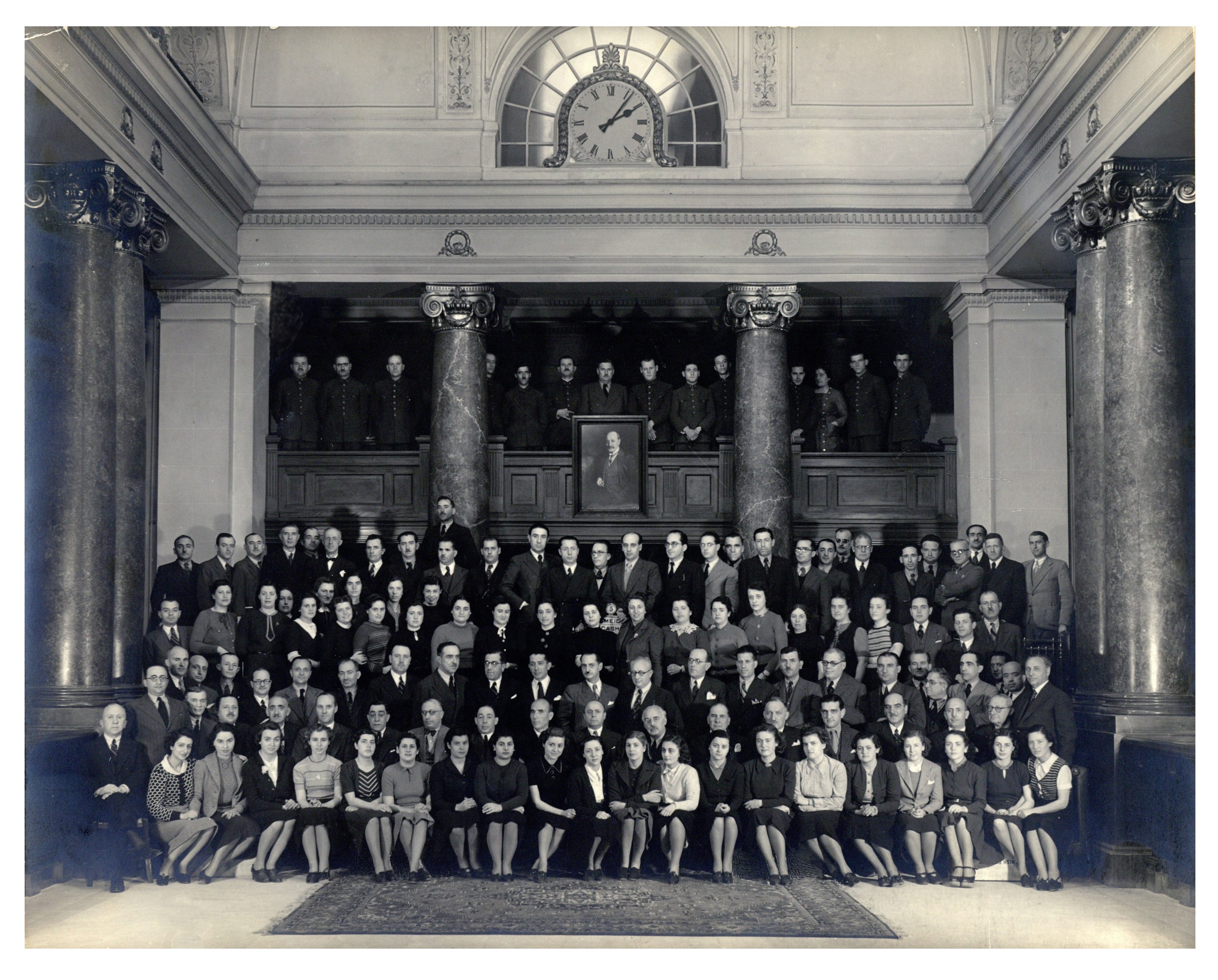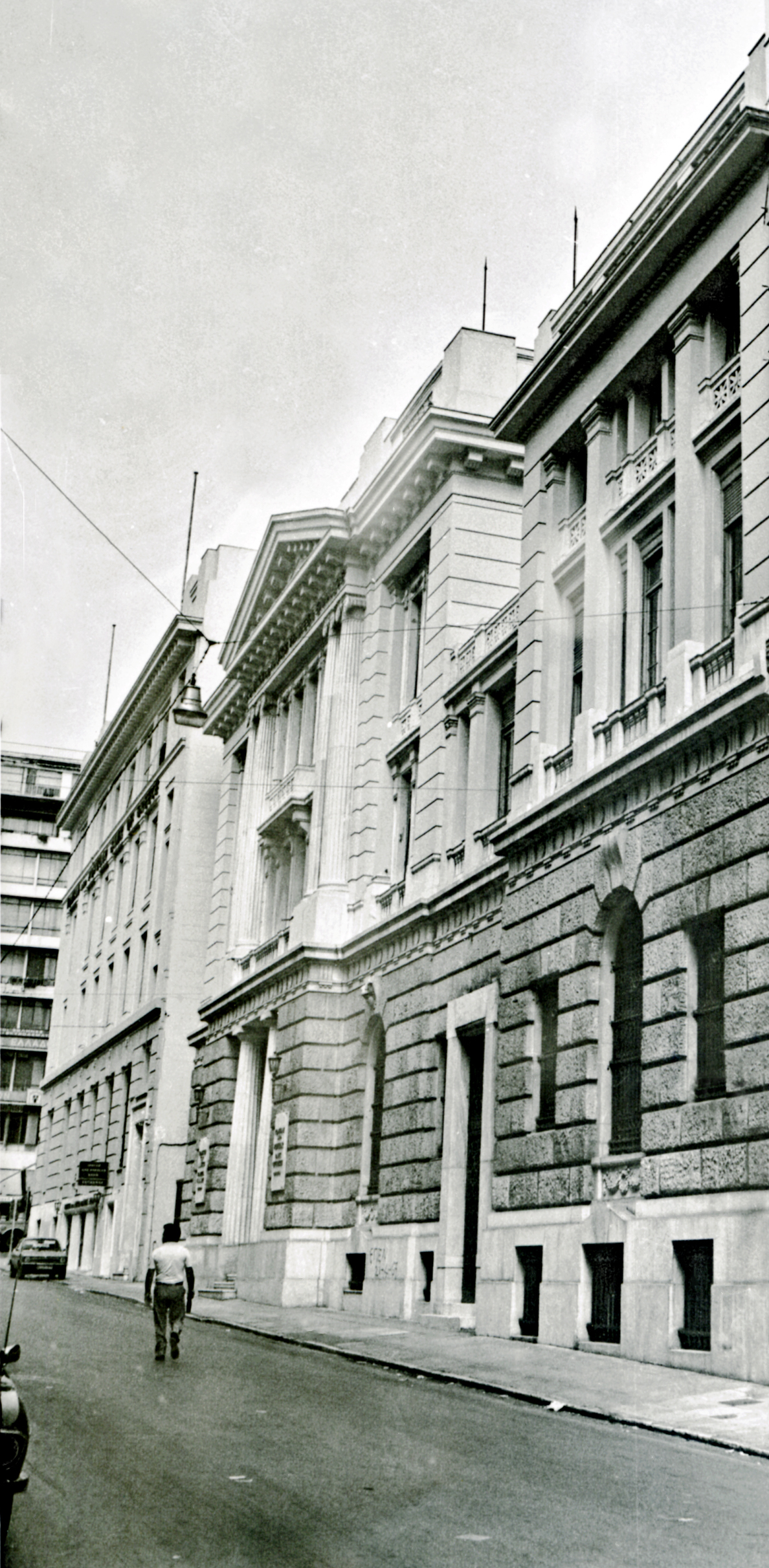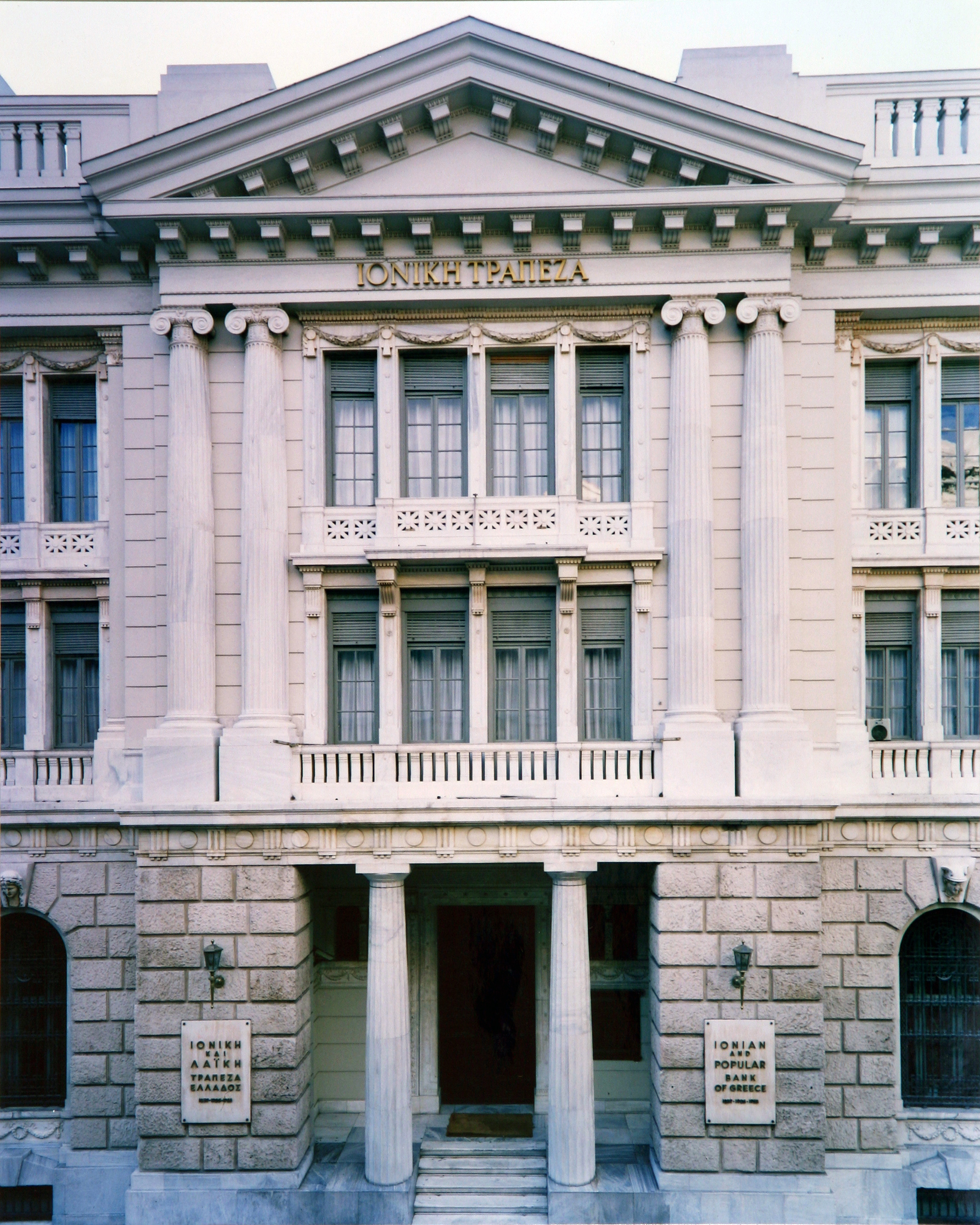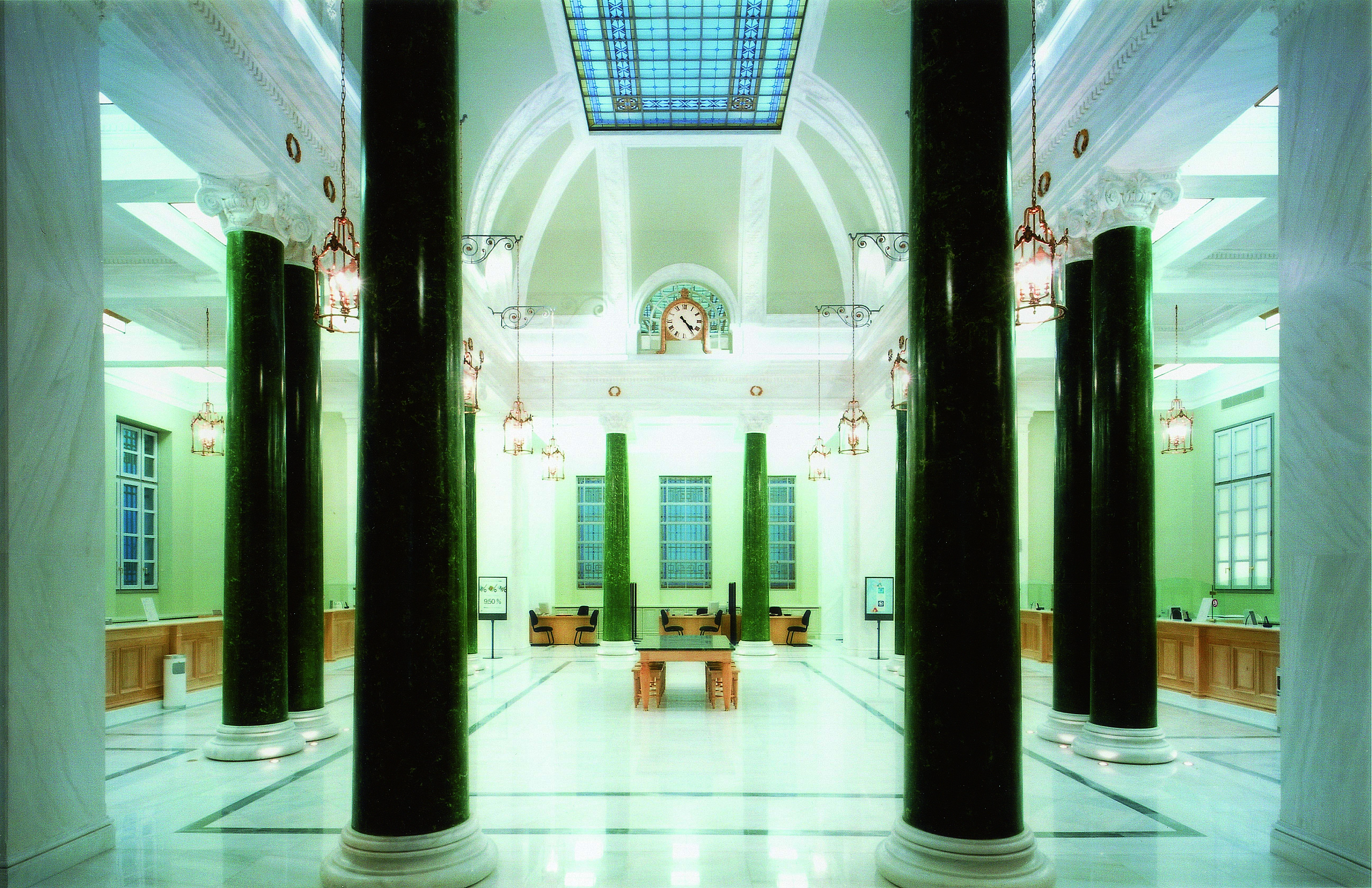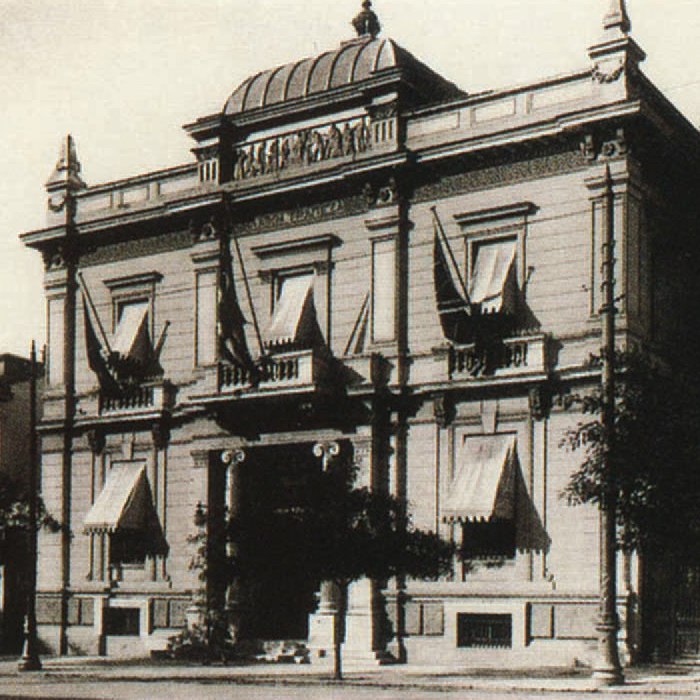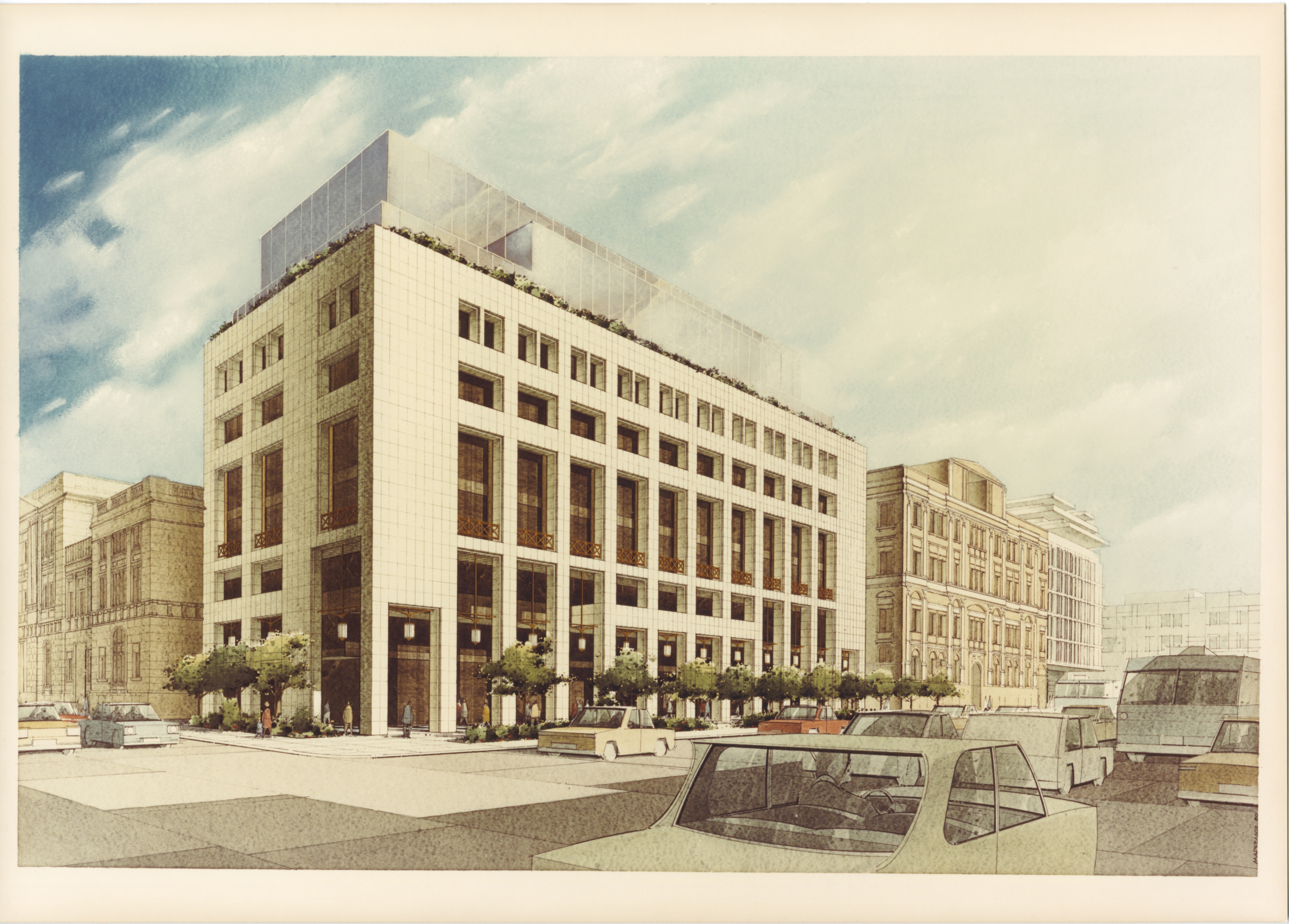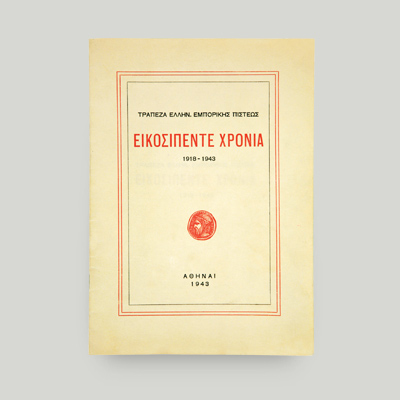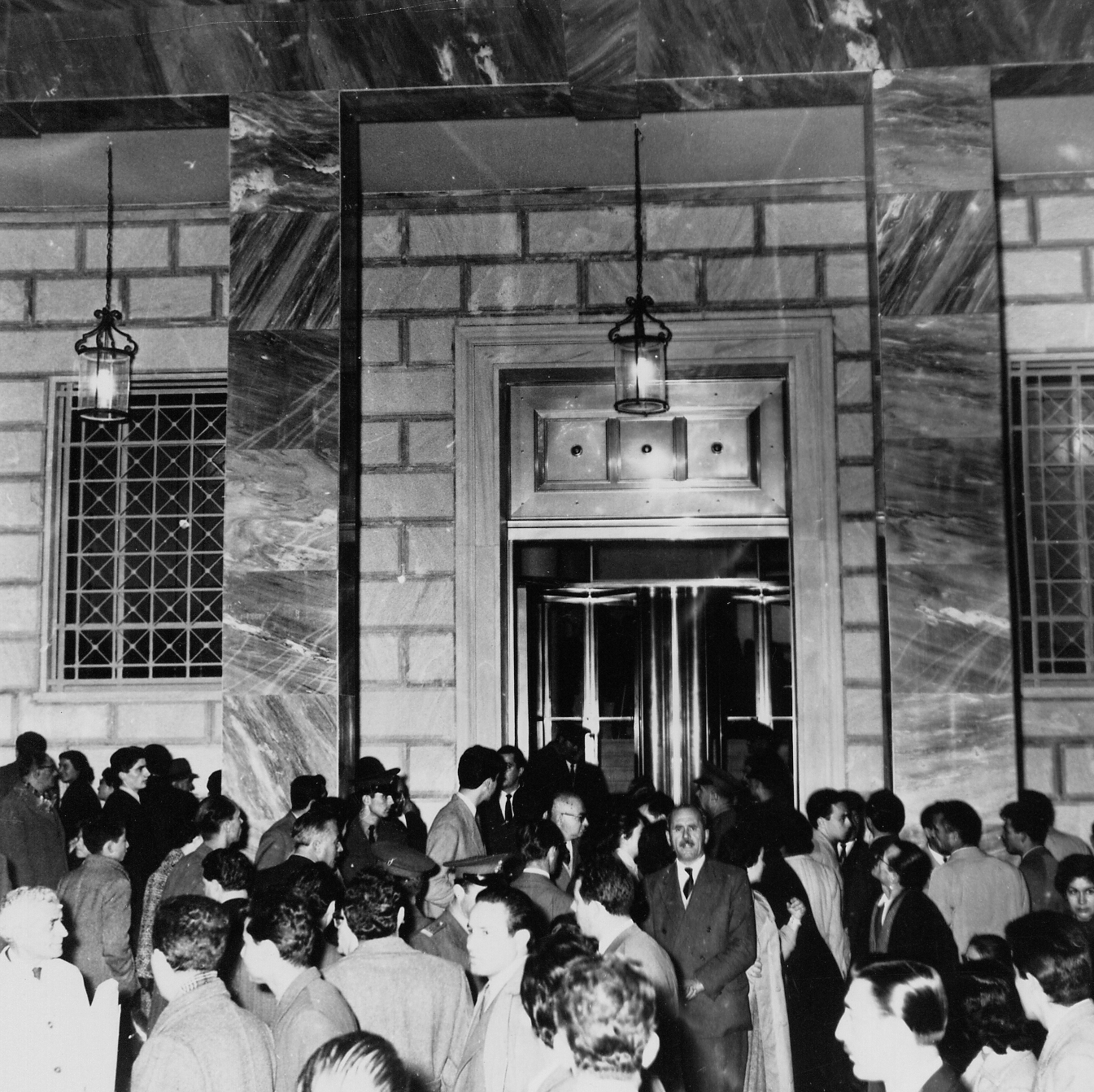Ionian Bank headquarters
The Ionian Bank Athens headquarters on Pesmazoglou Street is one of the most imposing buildings erected in early-20th-century Greece. It was also one of the first purpose-built bank headquarters in the Greek capital. Ionian Bank’s collection of rare photos allows a glimpse into the building’s history and development from 1939 to the present day.
Photos of the Ionian Bank headquarters in different phases of its history from 1939 to the present:
- Group commemorative photo of Ionian Bank’s employees (1939). The main hall boasts an arched window with a clock at its centre and is aptly decorated with Ionic-style columns all around (photo 1).
- Exterior of the building after it was merged with the adjacent Popular Bank building (photos 2 and 3).
- The main hall following refurbishment by Alpha Bank in 2006. Refurbishment work restored the building’s splendour and imposing character (photo 4).
The construction phase
1912 saw the beginning of construction work for Ionian Bank’s new branch on Pesmazoglou Street. It is thought to have been designed by an English architect in collaboration with established Greek architect Anastasios Metaxas.
The project was mentioned at the General Meeting of the bank’s shareholders in London. The minutes of the meeting actually included an extensive part on the construction materials, architectural style and building layout, as well as the safety of the new vaults.
However, the construction process was not without its problems.
Completion and extension
Shortly before construction work was completed, it was deemed necessary to modify the skylight. The purchase of the grand wall clock was also approved in early 1915. A replica of that clock is still part of the decoration in the back of the main hall.
The employees started working at the new building on 21 September 1915. However, some furniture and other fittings had yet to be purchased. Therefore, the building’s official opening was postponed for some time.
A year later, the second phase of construction was completed with the addition of an extension on the long side. The extension was designed by Anastasios Metaxas. His name appears on a plaque at the building entrance.
Construction was not seamless at this stage either. Even Sophia, Queen of Greece at the time, is said to have made suggestions for modifications to the structure.
The architectural style
The influence of English architecture is evident in this gem of a building.
Neoclassical elements abound, too, with the impressive hollow dome and decorative elements in the main service area, such as the white plant motifs in relief, along with the typical neoclassical exterior. Neoclassicism was also the prevailing architectural style in Great Britain during the reign of King Edward (1890-1914).
Milestones in the building’s history
The merger of Ionian Bank with Popular Bank in 1958 made it necessary to also merge the 2 banks’ headquarters, which stood adjacent to each other. Until then, a small courtyard had separated the two buildings.
Architect Konstantinos Kapsampelis took on the project and came up with an interior layout that would maximise functionality between the 2 buildings.
In 1983 the Ionian Bank headquarters were classified as a listed building.
Since 2000, when Alpha Credit Bank absorbed Ionian Bank to create Alpha Bank as we know it, the building has belonged to the latter.
Upon acquiring the property, Alpha Bank started to plan the refurbishment and reconstruction process right away. The purpose was to restore all the elements modified during the 1958 merger to their original form.
Today, the atmosphere in the two-storey main hall of the Ionian Bank headquarters is strongly reminiscent of the building’s first years of operation during the 1920s.
A unique collection
The items are part of Ionian Bank’s collection of rare photos. They are unique proof of the bank’s building activity and the fine examples of neoclassical architecture that are its mark on the city’s landscape.
The building in our publications
More information about the Ionian Bank headquarters is available in City Block 19: The Presence of Alpha Bank in the Centre of Athens by Dimitris Filippidis, 2009, Athens. The book details the history of Alpha Bank’s buildings, which occupy a great part of city block no. 19 in the centre of Athens.
Buy the publication City Block 19: The Presence of Alpha Bank in the Centre of Athens on the Alpha Bank e-shop.
The Alpha Bank Historical Archives are not open to the public.
Research visits can be organised upon request.
Contact us to request a visit.
